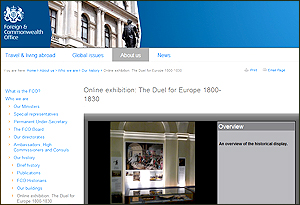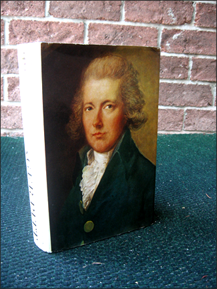‘The Duel for Europe 1800-1830’ is an exhibition created by the British Foreign & Commonwealth Office. Although there is a physical exhibit, which contains artifacts such as an 1811 pistol, made by a leading London gunmaker, and the Treaties of Vienna and Paris, it is also, much to the delight of this history enthusiast who lives in Canada, an online exhibition.
‘The Duel for Europe 1800-1830’ “highlights one of the most important periods in the history of the Foreign Office, when it helped to end the devastation of war and begin one of Europe’s longest periods of peace.” The exhibition, made up of images and explanatory text, begins with the Revolutionary and Napoleonic Wars that consumed Britain, and the need for a new system to bring peace. Further pages summarize the 1809 duel between the Foreign Secretary, George Canning, and the Secretary for War, Lord Castlereagh, which I have previously discussed on this blog, and their different approaches to foreign policy.
Discussing the idea behind the exhibit, Chief Historian Patrick Salmon explains, “we thought of it as a literal duel, obviously, but also as a metaphorical duel; a duel between Britain and Napoleon for the future of Europe, and a duel between two alternative views of foreign policy”, referring to Canning and Castlereagh. Both men served as Foreign Secretary, but while Castlereagh worked through persuasion in one-on-one meetings and favoured a policy of international agreement, Canning preferred to use public oratory and was viewed as an isolationist.
I was surprised to learn that the Foreign Office regularly employs historians, such as Chief Historian Patrick Salmon. Aside from providing briefing support on historical issues, the historians’ roles include publishing the Official Record of British Foreign Policy since World War II, with an emphasis on documents from the last thirty years that have not yet gone to the National Archives.
‘The Duel for Europe 1800-1830’ is the first exhibition by the Foreign & Commonwealth Office, but Salmon hopes that this will be the beginning of several exhibits. I hope so too.










